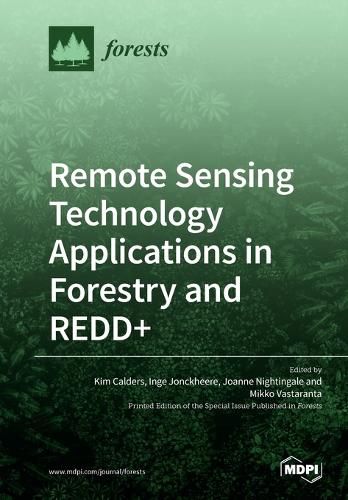Readings Newsletter
Become a Readings Member to make your shopping experience even easier.
Sign in or sign up for free!
You’re not far away from qualifying for FREE standard shipping within Australia
You’ve qualified for FREE standard shipping within Australia
The cart is loading…






This title is printed to order. This book may have been self-published. If so, we cannot guarantee the quality of the content. In the main most books will have gone through the editing process however some may not. We therefore suggest that you be aware of this before ordering this book. If in doubt check either the author or publisher’s details as we are unable to accept any returns unless they are faulty. Please contact us if you have any questions.
Advances in close-range and remote sensing technologies are driving innovations in forest resource assessments and monitoring on varying scales. Data acquired with airborne and spaceborne platforms provide high(er) spatial resolution, more frequent coverage, and more spectral information. Recent developments in ground-based sensors have advanced 3D measurements, low-cost permanent systems, and community-based monitoring of forests. The UNFCCC REDD+ mechanism has advanced the remote sensing community and the development of forest geospatial products that can be used by countries for the international reporting and national forest monitoring. However, an urgent need remains to better understand the options and limitations of remote and close-range sensing techniques in the field of forest degradation and forest change. Therefore, we invite scientists working on remote sensing technologies, close-range sensing, and field data to contribute to this Special Issue. Topics of interest include: (1) novel remote sensing applications that can meet the needs of forest resource information and REDD+ MRV, (2) case studies of applying remote sensing data for REDD+ MRV, (3) timeseries algorithms and methodologies for forest resource assessment on different spatial scales varying from the tree to the national level, and (4) novel close-range sensing applications that can support sustainable forestry and REDD+ MRV. We particularly welcome submissions on data fusion.
$9.00 standard shipping within Australia
FREE standard shipping within Australia for orders over $100.00
Express & International shipping calculated at checkout
This title is printed to order. This book may have been self-published. If so, we cannot guarantee the quality of the content. In the main most books will have gone through the editing process however some may not. We therefore suggest that you be aware of this before ordering this book. If in doubt check either the author or publisher’s details as we are unable to accept any returns unless they are faulty. Please contact us if you have any questions.
Advances in close-range and remote sensing technologies are driving innovations in forest resource assessments and monitoring on varying scales. Data acquired with airborne and spaceborne platforms provide high(er) spatial resolution, more frequent coverage, and more spectral information. Recent developments in ground-based sensors have advanced 3D measurements, low-cost permanent systems, and community-based monitoring of forests. The UNFCCC REDD+ mechanism has advanced the remote sensing community and the development of forest geospatial products that can be used by countries for the international reporting and national forest monitoring. However, an urgent need remains to better understand the options and limitations of remote and close-range sensing techniques in the field of forest degradation and forest change. Therefore, we invite scientists working on remote sensing technologies, close-range sensing, and field data to contribute to this Special Issue. Topics of interest include: (1) novel remote sensing applications that can meet the needs of forest resource information and REDD+ MRV, (2) case studies of applying remote sensing data for REDD+ MRV, (3) timeseries algorithms and methodologies for forest resource assessment on different spatial scales varying from the tree to the national level, and (4) novel close-range sensing applications that can support sustainable forestry and REDD+ MRV. We particularly welcome submissions on data fusion.